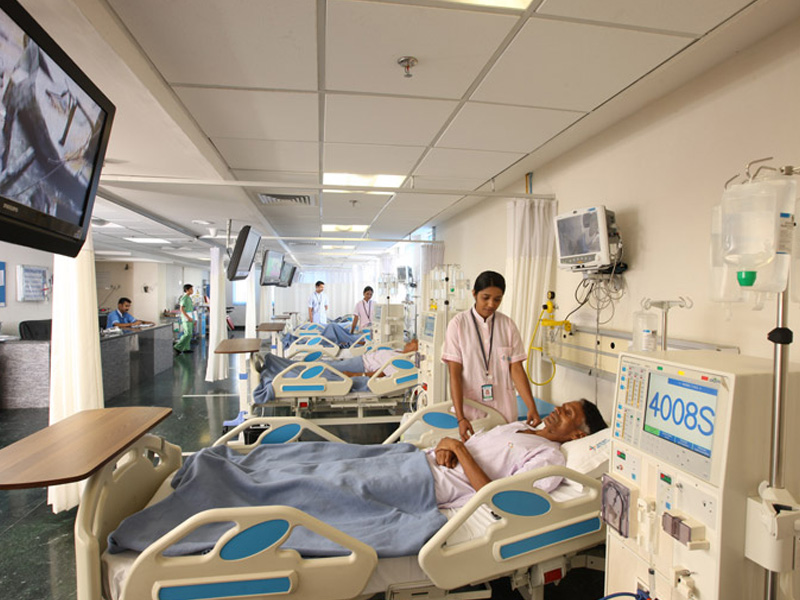United States Dialysis Services Market Introduction
The United States dialysis services market is on the cusp of a significant transformation. According to recent forecasts, the market is expected to grow at a Compound Annual Growth Rate (CAGR) of 3.2% during the period from 2024 to 2032. This growth is driven by several key factors, including the increasing prevalence of chronic diseases such as diabetes, hypertension, and obesity, as well as the rising geriatric population.
Globally, Chronic Kidney Disease (CKD) is associated with nearly 7,35,000 deaths every year, highlighting the critical need for effective dialysis services. In this blog post, we will delve into the world of telehealth and remote monitoring and how these advancements are reshaping dialysis services in the United States.
Telehealth in Dialysis Services
Definition and Scope of Telehealth in Dialysis
Telehealth, a term that has gained prominence in recent years, encompasses a wide range of healthcare services delivered remotely. It includes telemedicine, remote monitoring, teleconsultations, and more. In the context of dialysis services, telehealth involves the use of technology to facilitate patient care, consultations, and monitoring from a distance.
Evolution of Telehealth in Healthcare
To understand the significance of telehealth in dialysis services, it’s essential to trace its evolution in the broader healthcare industry. Telehealth has rapidly evolved from its inception, thanks to advancements in technology, increased internet accessibility, and the need for innovative healthcare solutions.
Current State of Telehealth Adoption in Dialysis Services
The adoption of telehealth in dialysis services varies across the country. Some centers have fully embraced these technologies, while others are still in the early stages of implementation. The COVID-19 pandemic accelerated the adoption of telehealth in many healthcare sectors, including dialysis, as it became crucial to limit in-person interactions.
Remote Monitoring Technologies
Overview of Remote Monitoring Devices and Platforms
Remote monitoring relies on a range of devices and platforms to collect and transmit patient data. These devices can include wearable sensors, home monitoring kits, and secure online platforms that enable patients and healthcare providers to access and track vital health information.
How Remote Monitoring Works in Dialysis
In the context of dialysis, remote monitoring involves tracking various parameters vital to a patient’s well-being, such as blood pressure, fluid levels, and dialysis machine performance. Patients can perform many of these measurements at home, reducing the need for frequent clinic visits.
Examples of Remote Monitoring Technologies in Dialysis
Several innovative technologies are making remote monitoring in dialysis services a reality. For instance, wearable devices can measure blood pressure and transmit data to healthcare providers in real-time. Additionally, home-based dialysis machines are equipped with connectivity features, allowing healthcare professionals to monitor treatment sessions remotely.
Advantages of Telehealth and Remote Monitoring
Improved Access to Care for Rural and Underserved Populations
One of the most significant advantages of telehealth and remote monitoring in dialysis services is the improved access to care, particularly for patients in rural and underserved areas. Many patients previously faced long and arduous journeys to reach dialysis centers, often multiple times a week. Telehealth reduces this burden by allowing remote consultations and monitoring.
Enhanced Patient Convenience and Reduced Travel Burden
For dialysis patients, the treatment process is demanding. Regular dialysis appointments can disrupt daily routines and lead to fatigue. Telehealth and remote monitoring offer the convenience of receiving care from the comfort of home, reducing the physical and emotional toll of frequent travel.
Early Detection of Issues and Timely Intervention
Remote monitoring technologies provide continuous data streams to healthcare providers, enabling them to detect potential issues early. This proactive approach can prevent complications, hospitalizations, and emergency interventions, ultimately improving patient outcomes.
Data-Driven Decision-Making for Healthcare Providers
Telehealth and remote monitoring generate vast amounts of patient data, which can be analyzed to make informed decisions about treatment plans. Healthcare providers can use this data to tailor care to individual patients, leading to more effective treatments.
Real-Life Patient Testimonials and Success Stories
To illustrate the real-world benefits of telehealth and remote monitoring, let’s explore some patient stories. These stories highlight how these technologies have positively impacted the lives of dialysis patients and their families.
Future Trends and Implications
Predicted Advancements in Telehealth and Remote Monitoring Technologies
The future of telehealth in dialysis services holds exciting possibilities. We’ll explore upcoming technological advancements and how they might further enhance patient care and outcomes.
How Telehealth Is Shaping the Future of Dialysis Care
Telehealth and remote monitoring are poised to become integral components of dialysis care. We’ll discuss how these technologies will shape the future of healthcare delivery for dialysis patients in the United States.
Potential Policy Changes and Their Impact
The regulatory landscape is continuously evolving, with potential policy changes on the horizon. We’ll examine how these changes might impact the adoption and reimbursement of telehealth services in dialysis.


